- Clone
- DX9 (See other available formats)
- Regulatory Status
- RUO
- Other Names
- NKAT3, NKB1, KIR-NKB1, p70
- Isotype
- Mouse IgG1, κ
- Ave. Rating
- Submit a Review
- Product Citations
- publications
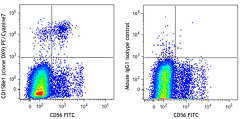
-

Human peripheral blood lymphocytes were stained with CD56 FITC and CD158e1 (clone DX9) PE/Cyanine7 (left) or mouse IgG1 PE/Cyanine7 isotype control (right).
| Cat # | Size | Price | Quantity Check Availability | Save | ||
|---|---|---|---|---|---|---|
| 312719 | 25 tests | 141€ | ||||
| 312720 | 100 tests | 306€ | ||||
CD158e1, also known as NKB1, is a 70 kD member of the immunoglobulin superfamily that is expressed on a subset of natural killer cells and T cells at varying levels among individuals. NKB1 is a type I membrane protein containing two immunoglobulin C2-type domains. The interaction of NKB1 with specific HLA-B antigens on a target cell (the HLA-Bw4 allele, for example) inhibits cytotoxicity and prevents target cell lysis and death. The interactions between KIR and MHC class I are thought to be important in NK and T cell regulation following antigen stimulation. The absence of ligands for KIRs may lower the threshold for activation through activating receptors and increase inflammation and susceptibility to autoimmune disease.
Product DetailsProduct Details
- Verified Reactivity
- Human
- Antibody Type
- Monoclonal
- Host Species
- Mouse
- Immunogen
- Human NK cell clone VL186-1.6
- Formulation
- Phosphate-buffered solution, pH 7.2, containing 0.09% sodium azide and BSA (origin USA)
- Preparation
- The antibody was purified by affinity chromatography and conjugated with PE/Cyanine7 under optimal conditions.
- Concentration
- Lot-specific (to obtain lot-specific concentration and expiration, please enter the lot number in our Certificate of Analysis online tool.)
- Storage & Handling
- The antibody solution should be stored undiluted between 2°C and 8°C, and protected from prolonged exposure to light. Do not freeze.
- Application
-
FC - Quality tested
- Recommended Usage
-
Each lot of this antibody is quality control tested by immunofluorescent staining with flow cytometric analysis. For flow cytometric staining, the suggested use of this reagent is 5 µl per million cells in 100 µl staining volume or 5 µl per 100 µl of whole blood.
- Excitation Laser
-
Blue Laser (488 nm)
Green Laser (532 nm)/Yellow-Green Laser (561 nm)
- Application Notes
-
The DX9 antibody reacts with the KIR (killer cell inhibitory receptor) designated NKB1 or KIR3DL1. Additional reported applications (for the relevant formats) include: immunoprecipitation1 and restoring the NK cell cytotoxicity4,8. The LEAF™ purified antibody (Endotoxin <0.1 EU/µg, Azide-Free, 0.2 µm filtered) is recommended for functional assays (Cat. No. 312710).
-
Application References
(PubMed link indicates BioLegend citation) -
- Litwin V, et al. 1994. J. Exp. Med. 180:537. (IP)
- Gumperz J, et al. 1996. J. Exp. Med. 183:1817.
- Gardiner CM, et al. 2001. J. Immunol. 166:2992.
- Bakker ABH, et al. 1998. J. Immunol. 160:5239.
- Goodier M, et al. 2000. J. Immunol. 165:139.
- Kirwan SE and Burshtyn DN. 2005. J. Immunol. 175:5006. (FC)
- Yawata M, et al. 2002. Immunogenetics 54:543.
- Valiante NM, et al. 1997. Immunity 7:739.
- Pascal V, et al. 2007. J. Immunol. 179:1625. (FC) PubMed
- Lichterfeld M, et al. 2008. J. Exp. Med. 204:2813. (FC) PubMed
- Luetke-Eversloh M, et al. 2014. PLoS Pathog. 10:1004441. PubMed
- Purdy AK, et al. 2014. J Immunol. 193:4675. PubMed
- Product Citations
-
- RRID
-
AB_2563363 (BioLegend Cat. No. 312719)
AB_2563363 (BioLegend Cat. No. 312720)
Antigen Details
- Structure
- Immunoglobulin superfamily member, contains two immunoglobulin C2-type domains, 70 kD type I membrane protein
- Distribution
-
Subset of NK and T cells
- Function
- Inhibits cytotoxic function of NK and T cells upon interacting with specific HLA-B antigens on target cell
- Ligand/Receptor
- HLA-B antigens such as the HLA-Bw4 allele
- Cell Type
- NK cells, T cells
- Biology Area
- Immunology
- Molecular Family
- CD Molecules
- Antigen References
-
1. Colonna M, et al. 1995. Science 268:405.
2. D'Andrea A, et al. 1995. J. Immunol.. 155:2306.
3. Uhrburg M, et al. 1997. Immunity 7:753.
4. Gumperz JE, et al. 1996. J. Exp. Med. 183:1817.
5. Wagtmann N, et al. 1995. Immunity 3:801. - Gene ID
- 3811 View all products for this Gene ID
- UniProt
- View information about CD158e1 on UniProt.org
Related Pages & Pathways
Pages
Other Formats
View All CD158e1 Reagents Request Custom ConjugationCustomers Also Purchased
Compare Data Across All Formats
This data display is provided for general comparisons between formats.
Your actual data may vary due to variations in samples, target cells, instruments and their settings, staining conditions, and other factors.
If you need assistance with selecting the best format contact our expert technical support team.
-
FITC anti-human CD158e1 (KIR3DL1, NKB1)
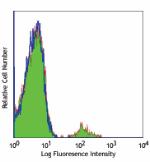
Human peripheral blood lymphocytes stained with DX9 FITC -
PE anti-human CD158e1 (KIR3DL1, NKB1)
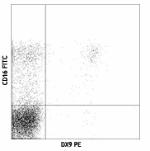
Human peripheral blood lymphocytes stained with DX9 PE and C... -
Alexa Fluor® 700 anti-human CD158e1 (KIR3DL1, NKB1)
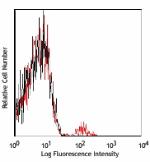
Human peripheral blood lymphocytes stained with DX9 Alexa Fl... -
Brilliant Violet 421™ anti-human CD158e1 (KIR3DL1, NKB1)
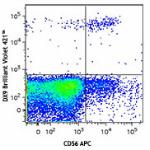
Human peripheral blood lymphocytes were stained with CD56 AP... 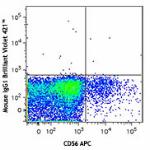
-
PerCP/Cyanine5.5 anti-human CD158e1 (KIR3DL1, NKB1)

Human peripheral blood lymphocytes were stained with CD56 AP... -
PE/Cyanine7 anti-human CD158e1 (KIR3DL1, NKB1)

Human peripheral blood lymphocytes were stained with CD56 FI... -
APC anti-human CD158e1 (KIR3DL1, NKB1)

Human peripheral blood lymphocytes were stained with CD56 PE... 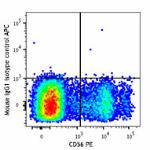
-
APC/Fire™ 750 anti-human CD158e1 (KIR3DL1, NKB1)
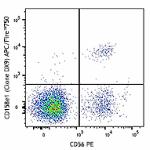
Human peripheral blood lymphocytes were stained with CD56 PE... 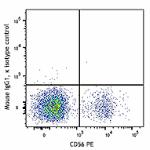
-
TotalSeq™-A0599 anti-human CD158e1 (KIR3DL1, NKB1)
-
TotalSeq™-C0599 anti-human CD158e1 (KIR3DL1, NKB1)
-
TotalSeq™-B0599 anti-human CD158e1 (KIR3DL1, NKB1)
-
Brilliant Violet 650™ anti-human CD158e1 (KIR3DL1, NKB1)

Human peripheral blood cells were surface stained with anti-... -
Brilliant Violet 711™ anti-human CD158e1 (KIR3DL1, NKB1)

Human peripheral blood cells were surface stained with anti-... -
Spark Red™ 718 anti-human CD158e1 (KIR3DL1, NKB1) (Flexi-Fluor™)
-
Brilliant Violet 605™ anti-human CD158e1 (KIR3DL1, NKB1)

Human peripheral blood lymphocytes were stained with anti-hu... -
TotalSeq™-D0559 anti-human CD158e1 (KIR3DL1, NKB1)

 Login / Register
Login / Register 











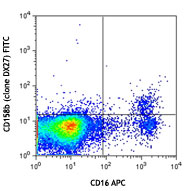
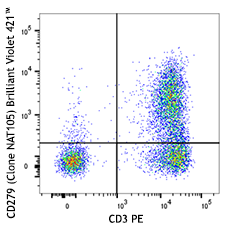
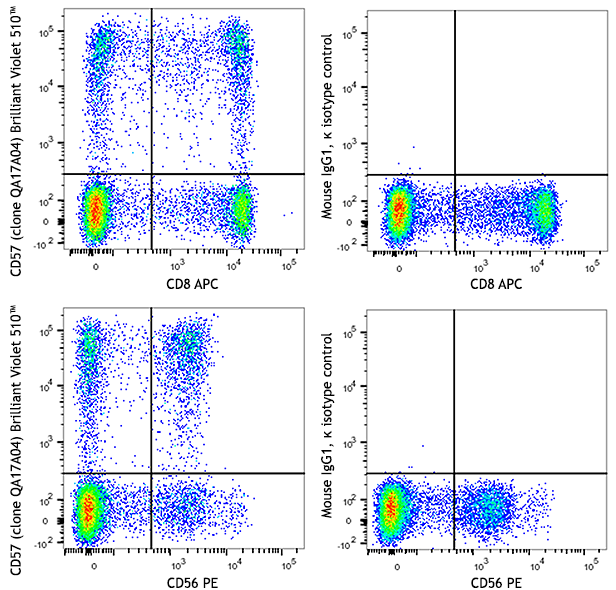



Follow Us